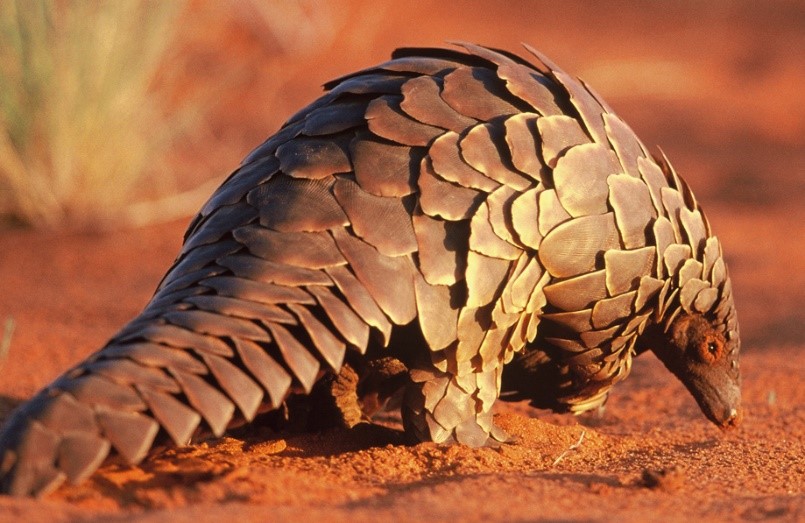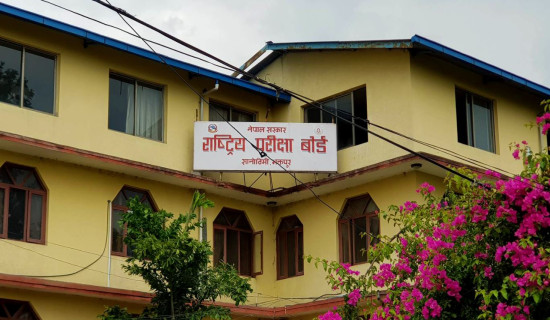- Friday, 26 April 2024
Distribution, threat and conservation efforts of pangolin in Nepal
 Manisha Ghimire
Manisha Ghimire
Out of four Asian
pangolins, two species (Chinese pangolin Manis
pentadactyla) and Indian pangolin (Manis
crassicaudata) are found in Nepal. Chinese pangolins are distributed from the lower foothills to the
middle mountains of Nepal while the Indian pangolins are reported
from the Terai region of southern Nepal. In Nepali, Chinese pangolins are called Kalo Salak and
Indian pangolin is called Tame Salak.
In Terai, pangolins are locally known as Sal
Machhari. Pangolin holds the title of most trafficked animal in the world.
“Today people kill and make illegal trade of pangolins, later we will have to bear with the imbalance of the ecosystem.”
Earth without wildlife is a life without beautiful things.
But people's greediness and present state of living have direct effects on the
life of wild animals. Every creature has the right to live and equal rights to
access the earth.
Pangolins are widely
distributed in non-protected areas, near local communities but due to the lack
of awareness of endangered pangolin, the illegal trade of pangolin has increased. According
to IUCN, 2020, Chinese pangolin are critically endangered and Indian pangolins
are endangered while the legal status of this both species in Nepal is
Protected (Appendix I) under the National Parks and Wildlife Conservation Act
1973 and Appendix I in CITES law.
Distribution
However,
with a few exceptions, there is little information at the public
level (local, national, or
global) about the status of pangolin and there is a lack of research on its prevalence.
According to (DNPWAC, 2020); Indian pangolins are distributed in
lowland areas of southern and western Nepal. Within protected areas, this
species has been recorded in Bardia, Banke, Chitwan, Parsa and Shukla Phanta
National Parks. In Bara, Chitwan, Makwanpur and Parsa districts, it is also
recorded outside the protected areas. A national survey of Chinese
pangolins in Nepal revealed presence of Chinese pangolins throughout Nepal, but they are mainly distributed
in the Inner Terai Valleys, central
hills, and human-dominated landscapes of the mountains. In the
protected areas of Nepal, this
species has been recorded in Kangchenjunga,
Gaurishankar and Annapurna Conservation Areas, Makalu Barun, Sagarmatha,
Chitwan, Parsa, Shivapuri-Nagarjun, and Sukla Phanta National Parks. Pangolin
has been recorded also in the forests in the Kathmandu and Baglung districts.
Threats
Due to excessive exploitation, hunting and poaching, the estimated future decline in the Indian pangolin population is
50% over three generations (2019-2043).
The current population of Chinese pangolin is estimated to be
about 5,000, and it has
been observed to decrease when the
rate of decrease exceeds 80% in the third generation (2019-2040)
(DNPWAC, 2020). Therefore, the main
threats to pangolins are hunting
and poaching, which leads them
near to extinction.
Nepal has faced challenges posed by pangolin
smuggling, as the endangered species is
smuggled via India and Africa to China. Pangolin in Nepal are used to
eat as meat for their health benefits, and due to less knowledge, many farmers
believe the disadvantage of having species like this influences them to kill
when they are seen.
Conservation
Efforts
The conservation and
effective protection measures are direly needed for the prevention of pangolin before
its extinction from Nepal. All the local levels should coordinate and
should organize the conservation activities to raise the awareness of the locals
and to control the illegal trade. These efforts would only be possible after
the support of the central government and the concerned authorities by visualizing
the importance of such endangered species of Nepal. Further awareness and
education should be provided from the school’s curriculum highlighting the
species' importance and community ownership should be encouraged for the protection
and to reduce poaching.
The
amended act to regulate and control the
international trade of endangered wildlife and flora, 2074/01/10, Chapter 5, Schedule
20 Section 1 includes
killing, poaching, transporting, selling or buying of protected species as
punishable with a fine of and Rs. 5000 or Rs. 20,000 to Rs. 1 lakh and/or up to
6 months to 1-year jail. But the problem is seen in the enforcement of the act. So,
this type of law should be strictly communicated to the local people in order
to discourage the poaching and illegal trade of pangolin. Thus, effective
conservation will only be possible if the importance of species is instilled in the
local people and the next generation during their childhood education period.
(Graduated from Tribhuvan University, the writer is an environmentalist and is currently working in the field of wildlife conservation)
















